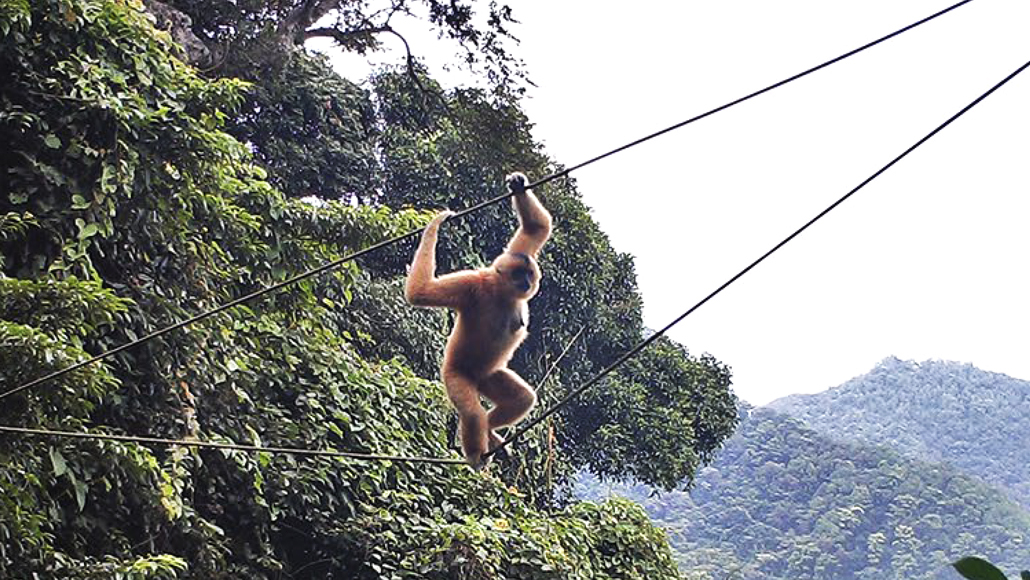
Simple rope bridges like this could help connect forests fragmented by human activities, a new study finds. That could be good news for critically endangered Hainan gibbons (one shown) and possibly other species
Kadoorie Farm and Botanic Garden, B.P.L. Chan et al/Scientific Reports 2020